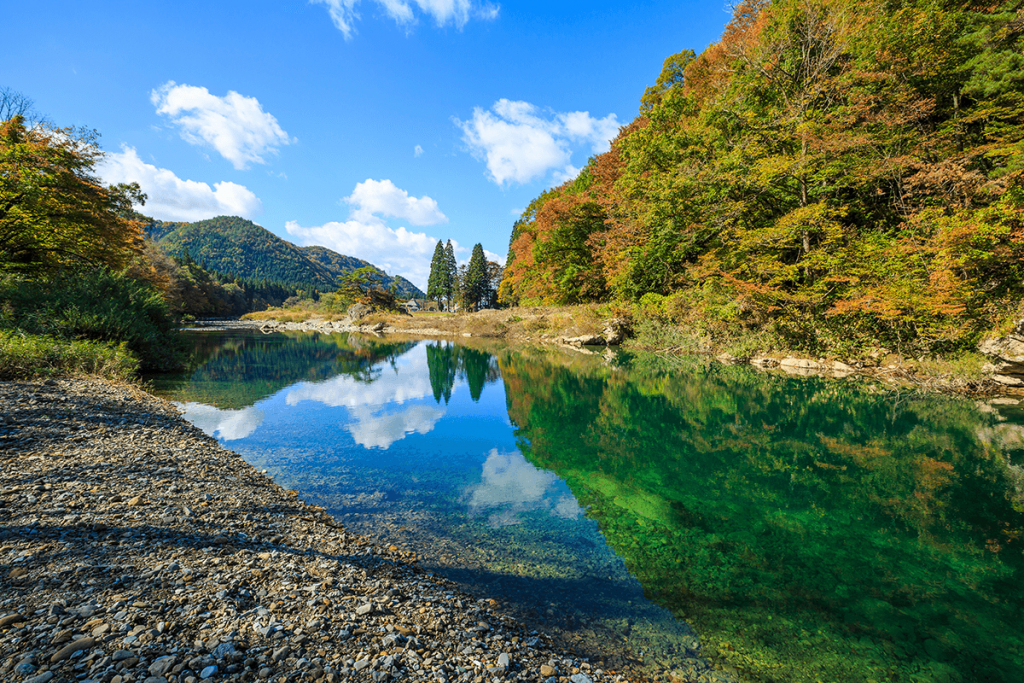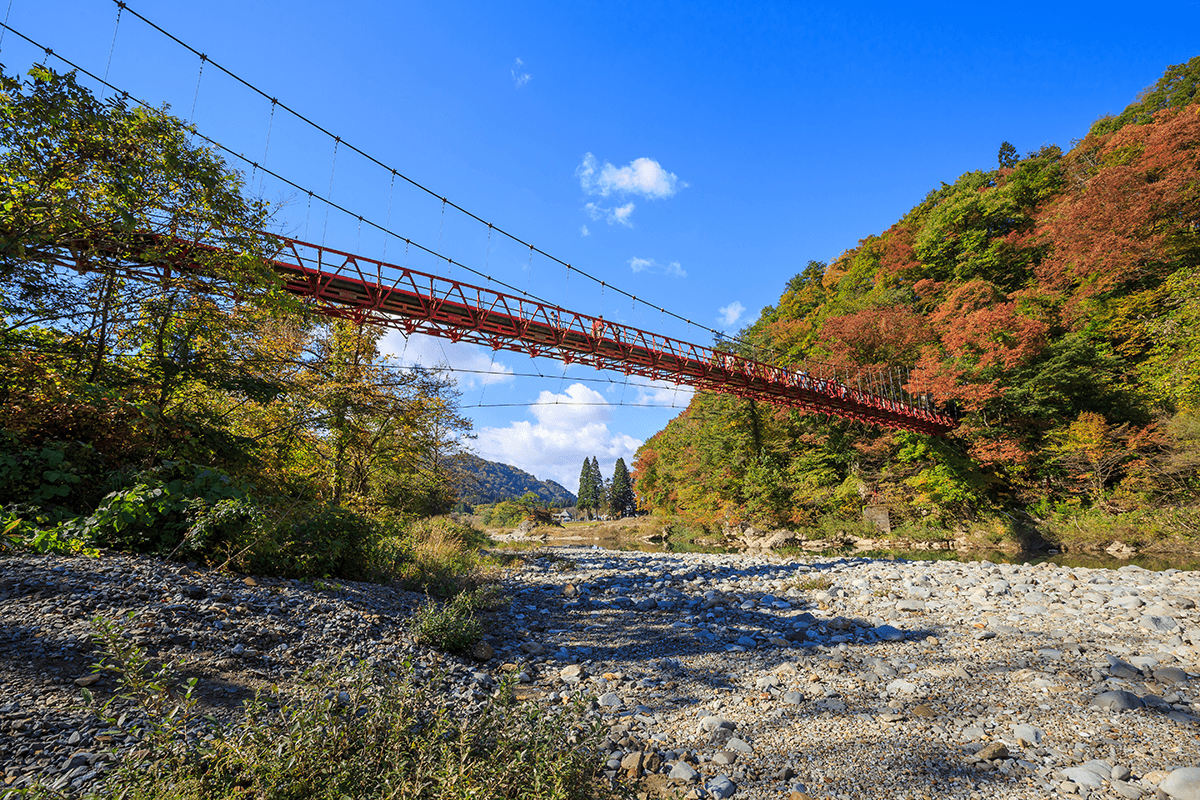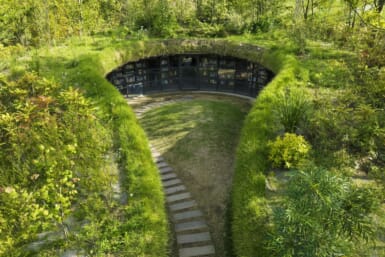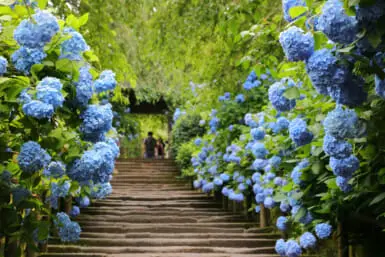Home to streams and rivers of an almost unearthly blue that reflects the mountainous landscape on clear days, the Dakigaeri Valley is truly one of the natural beauties of Akita, and very close to the onsens of Nyuto.
Embraceable View
Students of Japanese might find a bit of a mystery lurking in the name of this lovely landscape: Dakigaeri (抱返り) contains the kanji for “embrace” (抱) and “return” (返). As one story goes, the old mountain road that wove its way through the area was so narrow and treacherous that people going either way would have needed to embrace in order to make their way around each other. Fortunately, in this day and age, visitors can look forward to a well-built promenade that is wide enough to allow more than a few people to make their way up side by side – only embracing should they feel inspired to do so by the spectacular scenery. Walking their way up towards the valley ridge, they’ll be able to gaze on the Obonai Forest, which is replete with Akita cedar and a variety of other trees that turn into a colorful show by the time autumn comes around.
Beauty in Suspension
Continuing along the promenade, visitors to the area will come across a red span that brings distinctive lines of color to the area. Built in 1926, the Kami Iwahashi is the oldest suspension bridge in the prefecture, and adds an aesthetic man-made touch to the natural surroundings. Whether visitors are standing on the bridge itself or looking up at the landscape with the crimson lines of the Kami Iwahashi crossing the scene – particularly striking against a clear blue sky – they will be treated to a vista that they won’t soon forget. The star of all of the views, of course, are the jewel-like waters of the streams that make their way through the valley – they get their particularly lustrous hues from the light that passes through the shallow water and reflects off the white rock of the stream beds.
Mists of Incense
After passing by the Kami Iwahashi, walkers will come across another of the area’s celebrated spots: an area called Seiganji. This part of the river valley is laden with the mists kicked up from the fast-moving flow as it drops into a waterfall. Recognizing a similarity between the river’s mist and the clouds of incense that one might find at the altar of a Buddhist temple, locals gave the place a temple’s name. Continuing along, the waterfall can be seen from several different perspectives, each one more impressive than the next. More adventurous explorers can make their way through a tunnel that affords an even more impressive view of the waterfall at the other end.
Lovely Fare for the Changing Seasons
By the time the leaves begin to turn and the temperatures start to drop, another natural turn of events begins to happen: people start to get hungry after the long, energy-draining summer. There’s actually a phrase for it: shokuyoku no aki (the appetite that comes with autumn). For visitors to the area around Dakigaeri Valley, one way to satisfy this hunger is by digging into a hearty serving of yama no imo nabe, the Semboku version of Japan’s ubiquitous hotpot. The starring ingredient of this local dish is Japanese yam, which imparts a unique flavor to this meal that is a perfect complement to the cooling weather.











